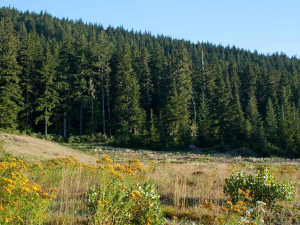Editorial: Getting RMA settings right
OPINION: The Government has been seeking industry feedback on its proposed amendments to a range of Resource Management Act (RMA) national direction instruments.
 If fossil fuel emissions keep up at the same rate in this country, we won't be able to reach our binding emissions targets for 2030 without planting more trees
If fossil fuel emissions keep up at the same rate in this country, we won't be able to reach our binding emissions targets for 2030 without planting more trees
OPINION: Most people will be aware of the Government's plans to boost coal, oil and gas production to meet energy requirements.
Whatever your stance on the short-term efficacy of renewable sources and developments, it's worth noting a major reason for afforestation in New Zealand right now is offsetting emissions produced from fossil fuels.
Recent statistics show Kiwi farmers doing an admirable job of reducing their on-farm emissions, but the point of diminishing returns has already easily been reached.
If fossil fuel emissions keep up at the same rate in this country, we won't be able to reach our binding emissions targets for 2030 without - you guessed it - planting more trees. Where are these trees planted? Productive farming land. Who bears the cost of this conversion? Hard working Kiwi farmers.
The Government has two stances on this topic. One, increased domestic fossil fuel production will reduce reliance on imports, cutting down on transport costs and emissions and theoretically have a net reduction in emissions despite identical consumption rates.
Secondly, renewable sources are not developed enough to cover surges in electricity usage or convert our primarily petrol-powered transport fleet.
For all the publicity about the necessity of expanding fossil fuel production because renewables cannot supply 100% of the country 100% of the time, there seems to be much less government discussion about fixing or expanding the renewable energy grid in the first place.
Is there some discussion on this long-term plan? Certainly. Is it being given the same priority as the quick band-aid fix that may be shafting Kiwi farmers long-term? No.
Sadly, there is no easy solution. Any reasonable discussion will need to accept that someone, something, somewhere, is going to get a bum deal. Whether New Zealand will have to deal with reduced primary production, spottier energy supplies or a less green country is a bullet we must bite.
The question is, who should put the bell on the cat?
As we move into the 2025/26 growing season, the Tractor and Machinery Association (TAMA) reports that the third quarter results for the year to date is showing that the stagnated tractor market of the last 18 months is showing signs of recovery.
DairyNZ chair Tracy Brown is urging dairy farmers to participate in the 2026 Levy vote, to be held early next year.
Beef + Lamb New Zealand (B+LNZ) is calling for nominations for director roles in the Eastern North Island and Southern South Island electoral districts.
Going one better than a frustratingly close second place finish at last year's event, the country's top axeman, Jack Jordan of Taumaranui, last weekend won the Stihl Timbersports World Championship individual event in.
Canterbury A&P Association (CAPA) show president Brent Chamberlain says a big development for this year is the Wool Zone, first introduced two years ago as a showplace for everything produced from wool, but now greatly enlarged with its own Wool Marquee and more than 30 trade sites.
Salmonellosis is a serious disease in cattle.